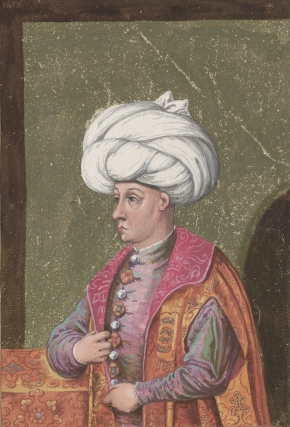|
History Of The Jews In North Macedonia
The history of the Jews in North Macedonia stretches back two thousand years, beginning during Roman antiquity, when Jews first arrived in the region. Today, following the Holocaust and emigration, especially to Israel, around 200 Jews remain in North Macedonia, mostly in the capital, Skopje and a few in Štip and Bitola.Only 200 strong, Macedonia's Jews celebrate unity and new synagogue Ruth E. Gruber, Jewish World Review Ancient Roman times The first Jews arrived in the area now known as North Macedonia during Roman times, when Jews fled persecution in other Roman territories, with some settling in the Roman territory of Macedonia. The presence of Jews in North Macedonia is attested by |
Ottoman Empire
The Ottoman Empire (), also called the Turkish Empire, was an empire, imperial realm that controlled much of Southeast Europe, West Asia, and North Africa from the 14th to early 20th centuries; it also controlled parts of southeastern Central Europe, between the early 16th and early 18th centuries. The empire emerged from a Anatolian beyliks, ''beylik'', or principality, founded in northwestern Anatolia in by the Turkoman (ethnonym), Turkoman tribal leader Osman I. His successors Ottoman wars in Europe, conquered much of Anatolia and expanded into the Balkans by the mid-14th century, transforming their petty kingdom into a transcontinental empire. The Ottomans ended the Byzantine Empire with the Fall of Constantinople, conquest of Constantinople in 1453 by Mehmed II. With its capital at History of Istanbul#Ottoman Empire, Constantinople (modern-day Istanbul) and control over a significant portion of the Mediterranean Basin, the Ottoman Empire was at the centre of interacti ... [...More Info...] [...Related Items...] OR: [Wikipedia] [Google] [Baidu] |
Rafael Moshe Kamhi
Rafael Moshe Kamhi (Bulgarian and ; 1870–1970), also known by the military pseudonym Skanderbeg, was a Sephardic Jew from Monastir (now Bitola) in Ottoman Macedonia. Besides being Jewish, Kamhi felt also strong attachment to the region of Macedonia as his native homeland. Kamhi was elected as liaison officer of the Internal Macedonian Revolutionary Organization The Internal Macedonian Revolutionary Organization (IMRO; ; ), was a secret revolutionary society founded in the Ottoman territories in Europe, that operated in the late 19th and early 20th centuries. Founded in 1893 in Salonica, it initia ... (IMRO). He directly participated in the Miss Stone Affair and in the Ilinden–Preobrazhenie Uprising of August 1903. Kamhi is among the few survivors of the History_of_the_Jews_in_Thessaloniki#Destruction_of_the_Jews_of_Salonika, Holocaust in Thessaloniki after being saved by Bulgarian authorities, while 90% of the Jewish population there was murdered. Biography Raf ... [...More Info...] [...Related Items...] OR: [Wikipedia] [Google] [Baidu] |
Alliance Israelite Universelle
An alliance is a relationship among people, groups, or states that have joined together for mutual benefit or to achieve some common purpose, whether or not an explicit agreement has been worked out among them. Members of an alliance are called allies. Alliances form in many settings, including political alliances, military alliances, and business alliances. When the term is used in the context of war or armed struggle, such associations may also be called allied powers, especially when discussing World War I or World War II. A formal military alliance is not required to be perceived as an ally—co-belligerence, fighting alongside someone, is enough. According to this usage, allies become so not when concluding an alliance treaty but when struck by war. When spelled with a capital "A", "Allies" usually denotes the countries who fought together against the Central Powers (German Empire, Austria-Hungary, and Ottoman Empire) in World War; I (the Allies of World War&n ... [...More Info...] [...Related Items...] OR: [Wikipedia] [Google] [Baidu] |
Ladino Language
Judaeo-Spanish or Judeo-Spanish (autonym , Hebrew script: ), also known as Ladino or Judezmo or Spaniolit, is a Romance language derived from Castilian Old Spanish. Originally spoken in Spain, and then after the Edict of Expulsion spreading through the Ottoman Empire (the Balkans, Turkey, West Asia, and North Africa) as well as France, Italy, the Netherlands, Morocco, and England, it is today spoken mainly by Sephardic minorities in more than 30 countries, with most speakers residing in Israel. Although it has no official status in any country, it has been acknowledged as a minority language in Bosnia and Herzegovina, Israel, and France. In 2017, it was formally recognised by the Royal Spanish Academy. The core vocabulary of Judaeo-Spanish is Old Spanish, and it has numerous elements from the other old Romance languages of the Iberian Peninsula: Old Aragonese, Asturleonese, Old Catalan, Galician-Portuguese, and Andalusi Romance. The language has been further enric ... [...More Info...] [...Related Items...] OR: [Wikipedia] [Google] [Baidu] |
Sephardic
Sephardic Jews, also known as Sephardi Jews or Sephardim, and rarely as Iberian Peninsular Jews, are a Jewish diaspora population associated with the historic Jewish communities of the Iberian Peninsula (Spain and Portugal) and their descendants. The term "Sephardic" comes from '' Sepharad'', the Hebrew word for Iberia. These communities flourished for centuries in Iberia until they were expelled in the late 15th century. Over time, "Sephardic" has also come to refer more broadly to Jews, particularly in the Middle East and North Africa, who adopted Sephardic religious customs and legal traditions, often due to the influence of exiles. In some cases, Ashkenazi Jews who settled in Sephardic communities and adopted their liturgy are also included under this term. Today, Sephardic Jews form a major component of world Jewry, with the largest population living in Israel. The earliest documented Jewish presence in the Iberian Peninsula dates to the Roman period, beginning in the fir ... [...More Info...] [...Related Items...] OR: [Wikipedia] [Google] [Baidu] |
Skopje Fire Of 1689
The fire of Skopje started on 26 October 1689 and lasted for two days, burning much of the city; only some stone-built structures, such as the fortress and some churches and mosques, were relatively undamaged. The fire had a disastrous effect on the city: its population declined from around 60,000 to around 10,000, and it lost its regional importance as a trading centre. Many of them settled in the imperial capital of Istanbul, creating the Üsküp mahallesi (Turkish for "Skopje neighborhood"). In 1689 the Austrian general Enea Silvio Piccolomini led an army to capture Kosovo, Bosnia and Macedonia from the Ottoman Empire. In the same time, successful development of Skopje was suddenly interrupted in 1689 by the entry of the Austrian army into Macedonia. During the Austrian-Turkish war (1683–1699), Austrian troops under the command of General Piccolomini penetrated in an unstoppable advance far into the interior of European Turkey and, after taking the fortress of Kaçanik, d ... [...More Info...] [...Related Items...] OR: [Wikipedia] [Google] [Baidu] |
Enea Silvio Piccolomini (general)
Enea Silvio Piccolomini (German: Johann Norbert Piccolomini; Papal States, c. 1650 – Pristina or Skopje, Ottoman Empire, 9 November 1689) was a Sienese nobleman whose lineage included two popes, and who served in the Habsburg army of Leopold I, Holy Roman Emperor. He is known for leading a campaign against the Ottomans in Bosnia, Macedonia and Kosovo in 1689, and for setting fire to Skopje, the present day capital of the Republic of North Macedonia. Origins Enea Silvio Piccolomini came from the long-established noble family Piccolomini, which included two popes: Pius II (born Enea Silvio Piccolomini) and Pius III (born Francesco Todeschini Piccolomini), as well as the Generalfeldmarschall Ottavio Piccolomini. Early career Young nobles left Siena individually and contacted the important Italian lobby in Vienna, hoping to obtain junior positions in some German regiment. In February 1660 Enea Silvio also left Siena to look for a career in Vienna. Enea Silvio's father establish ... [...More Info...] [...Related Items...] OR: [Wikipedia] [Google] [Baidu] |
Samuel De Medina
Rabbi Samuel ben Moses de Medina (abbreviated RaShDaM, or Maharashdam; 1505 – October 12, 1589), was a Talmudist and author from Thessaloniki. He was principal of the Talmudic academy of that city, which produced a great number of prominent scholars during the 16th and 17th centuries. His teachers were the noted Talmudists Joseph Taitazak and Levi Ibn Chaviv, and among his schoolmates were Isaac Adarbi, Joseph ibn Leb, and Moses Almosnino. While on a mission to Constantinople he met the noted grammarian Menahem Lonzano, who studied under him for some time and who therefore speaks of him as his teacher. Among Samuel's many disciples who attained prominence were Abraham de Boton, Joseph ibn Ezra and Ḥayyim Shabbethai. He had a controversy with Joseph Karo and other rabbis at Safed, against whom he wrote a polemical letter (''Ketav Tochachah''). He died at Salonica. A grandson of his was Samuel Hayyun, author of ''Bene Shemuel'', '' novellae'' and ''responsa'' (Saloni ... [...More Info...] [...Related Items...] OR: [Wikipedia] [Google] [Baidu] |
Nathan Of Gaza
Nathan Benjamin ben Elisha Hayyim haLevi Ashkenazi (), more famously known as Nathan of Gaza (; 1643–1680), or Ghazzati, was a theologian and author born in Jerusalem. After his marriage in 1663 he moved to Gaza, where he became famous as a prophet for the Jewish messiah claimant Sabbatai Zevi. Biography Nathan of Gaza was born in Jerusalem around 1643-1644; he died on Friday, January 11, 1680, in Sofia. Although he grew up in Jerusalem, his parents were Ashkenazi. His father, Elisha Hayyim ben Jacob, was a distinguished rabbinic intellectual who served as an envoy of Jerusalem, collecting donations for impoverished Jews. During his travels, he would distribute kabbalistic works he obtained in Jerusalem. Upon settling in Ottoman Syria, Elisha Hayyim ben Jacob took on the surname "Ashkenazi" as a means of differentiating his family and himself from the largely Sephardic Jews of the Empire. He died in Alawid Morocco in 1673. Before his father's death, Nathan of Gaza began s ... [...More Info...] [...Related Items...] OR: [Wikipedia] [Google] [Baidu] |
Bayezid II
Bayezid II (; ; 3 December 1447 – 26 May 1512) was the sultan of the Ottoman Empire from 1481 to 1512. During his reign, Bayezid consolidated the Ottoman Empire, thwarted a pro-Safavid dynasty, Safavid rebellion and finally abdicated his throne to his son, Selim I. Bayezid evacuated Sephardic Jews, Sephardi Jews from Spain following the fall of the Emirate of Granada, Nasrid Kingdom of Granada and the proclamation of the Alhambra Decree and resettled them throughout Ottoman lands, especially in Salonica. Early life Bayezid II was the son of Şehzade Mehmed (later Mehmed II) and Gülbahar Hatun (wife of Mehmed II), Gülbahar Hatun, an Albanians, Albanian concubine. At the time he was born, his grandfather Murad II was Sultan. When his grandfather died in 1451, his father became Sultan. There are sources that claim that Bayezid was the son of Sittişah Hatun, due to the two women's common middle name, Mükrime. This would make Ayşe Hatun, one of Bayezid's consorts, a first cousin ... [...More Info...] [...Related Items...] OR: [Wikipedia] [Google] [Baidu] |





